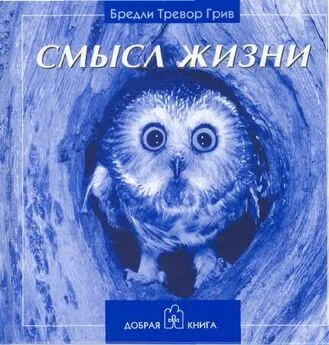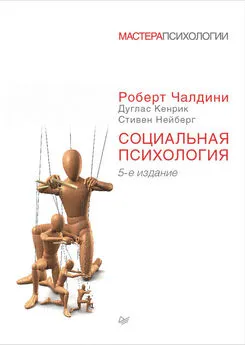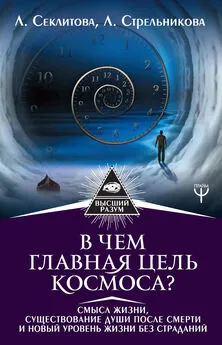Дуглас Кенрик - Инстинкты и смысл жизни. Почему в нас так много животного
- Название:Инстинкты и смысл жизни. Почему в нас так много животного
- Автор:
- Жанр:
- Издательство:Питер
- Год:2017
- Город:Санкт-Петербург
- ISBN:978-5-496-02956-8
- Рейтинг:
- Избранное:Добавить в избранное
-
Отзывы:
-
Ваша оценка:
Дуглас Кенрик - Инстинкты и смысл жизни. Почему в нас так много животного краткое содержание
Рассматривая человеческую природу с позиций эволюционной психологии, автор приходит к выводу, что за цивилизованным фасадом скрывается довольно дикое нутро. Но иррациональное поведение людей на самом деле глубоко рационально, включая даже расовые предрассудки и чрезмерное потребление.
Автор вскрывает истинную природу социальных проблем, международных конфликтов и глобальных рынков, поражая читателя яркими метафорами и нестандартными жизненными примерами и давая новые ответы на наиболее важные вопросы современной реальности.
Инстинкты и смысл жизни. Почему в нас так много животного - читать онлайн бесплатно полную версию (весь текст целиком)
Интервал:
Закладка:
66Наши исследования на тему происхождения социальных норм от индивидуальных правил принятия решений представлены в Kenrick, Li, & Butner, 2003.
67О механизмах конформизма см. Henrich &’Boyd, 1998, и Richerson & Boyd, 1998. О невербальной мимикрии можно прочитать в Chartrand & Bargh, 1999.
68Больше о возникающих социальных геометриях можно узнать из Kenrick et al., 2002. См. Hölldoebler & Wilson, 1994, о битвах между муравьиными колониями.
69Более подробно об этом рассказано в Kenrick et al., 2002.
70Большинство материалов, использованных для написания данного раздела, уже упоминалось ранее. См. также Kenrick et al., 2002.
71Книга, посвященная моему наставнику Роберту Чалдини, готовится к печати.
72Книга, которую я здесь упоминаю, — Lyubomirsky, 2007. Две другие прекрасные работы по психологии счастья: Gilbert, 2007, и Haidt, 2006. Исследования связи между счастьем и деньгами вы найдете в Dünn, Aknin, & Norton, 2008. Другие исследования, к примеру, предполагают, что дольше живут те, кто помогает другим (S. L. Brown, Nesse, Vinokur, & Smith, 2003).
73Jack Eurich, Noah Goldstein, Mark Schaller, Bob Cialdini, Sonja Lyubomirsky, Rich Keefe, David Funder, Jason Weeden, Adam Cohen, и Vlad Griskevicius также прочитали текст целиком и не только предоставили свои отзывы о ней, но также очень сильно меня вдохновили.
Книга, возможно, так и не вышла бы, если бы не Дэн Ариели и его агент Джим Левин, которые не только представили меня публике, но и дали множество полезных рекомендаций. Ти-Джей Келлехер из «Basic Books» помог мне достичь изначальной цели, удивительно тщательно и вдумчиво отредактировав мой текст.
Список литературы
Ackerman, J., Kenrick, D. T, & Schaller, M. (2007). Is friendship akin to kinship? Evolution & Human Behavior, 28, 365-374.
Ackerman, J., Shapiro, J. R., Neuberg, S. L., Kenrick, D. T., Becker, D. V, Griskevicius, V., Maner, J. K., & Schaller, M. (2006). They all look the same to me (unless they’re angry): From out-group homogeneity to out-group heterogeneity Psychological Science, 17, 836-840.
Ackerman, J. M., & Bargh, J. A. (2010). The purpose-driven life: Commentary on Kenrick et al. (2010). Perspectives on Psychological Science, 5, 323-326.
Adams, D. N. (1979). The hitchhiker's guide to the galaxy. London, England: Pan Books.
Alcock, J. (1998). Unpunctuated equilibrium in the Natural History essays of Stephen Jay Gould. Evolution & Human Behavior, 19, 321-336.
Alcock, J. (2001). The triumph of sociobiology. New York, NY: Oxford University Press.
Altemeyer, B. (1988 ). Enemies of freedom. San Francisco, CA: Jossey-Bass.
Anderson, U. S., Perea, E. E, Becker, D. V., Ackerman, J. M., Shapiro, J. R., Neuberg, S. L., & Kenrick, D. T. (2010). I only have eyes for you: Ovulation redirects attention (but not memory) to attractive men. Journal of Experimental Social Psychology, 46, 804-808.
Applebome, P. (1983, May 31). Racial issues raised in robbery case. New York Times, p. A14.
Applebome, P. (1984, March 22). Black is cleared by new arrest in Texas holdup. New York Times, p. A16.
Ariely, D. (2009). Predictably irrational: The hidden forces that shape our decisions. New York, NY: HarperCollins.
Asch, S. E. (1955). Opinions and social pressure. Scientific American, 193, 31-35.
Atran, S., & Norenzayan, A. (2004). Religion’s evolutionary landscape: Counterintuition, commitment, compassion, communion. Behavioral & Brain Sciences, 27, 713-770.
Bailey, J. M., Gaulin, S., Agyei, Y., & Gladue, B. A. (1994). Effects of gender and sexual orientation on evolutionarily relevant aspects of human mating psychology. Journal of Personality and Social Psychology, 66, 1081-1093.
Barrett, H. C., & Kurzban, R. (2006). Modularity in cognition: Framing the debate. Psychological Review, 113, 628-647.
Becker, D. V, Anderson, U. S., Neuberg, S. L., Maner, J. K., Shapiro, J. R., Ackerman, J. M., Schaller, M., & Kenrick, D. T. (2010). More memory bang for the attentional buck: Self-protection goals enhance encoding efficiency for potentially threatening males. Social Psychological & Personality Science, 1, 182-189.
Becker, D. V, Kenrick, D. T, Guerin, S., & Maner, J. K. (2005). Concentrating on beauty: Sexual selection and sociospatial memory. Personality & Social Psychology Bulletin, 31, 1643-1652.
Becker, D. V., Kenrick, D. T., Neuberg, S. L., Blackwell, K. C., & Smith, D. M. (2007). The confounded nature of angry men and happy women .Journal of Personality and Social Psychology, 92, 179-190.
Bjorkvist, K., Lagerspetz, K. M. J., & Kaukiainen, A. (1992). Do girls manipulate and boys fight? Developmental trends in regard to direct and indirect aggression. Aggressive Behavior, 18, 117-127.
Bourdain, A. (1995). Kitchen confidential: Adventures in the culinary underbelly. New York, NY: Bloomsbury.
Boyer, P. (2003). Religious thought and behaviour as by-products of brain function. Trends in Cognitive Science, 7, 119-124.
Brown, R., & Kulik, J. (1971). Flashbulb memories. Cognition, 5, 73-99.
Brown, S. L., Nesse, R. M., Vinokur, A. D., & Smith, D. M. (2003). Providing social support may be more beneficial than receiving it: Results from a prospective study of mortality. Psychological Science, 14, 320-327.
Buss, D. M. (1989). Sex differences in human mate preferences: Evolutionary hypotheses tested in 37 cultures. Behavioral & Brain Sciences, 12, 1-49.
Buss, D. M. (2005a). Handbook of evolutionary psychology. New York, NY: Wiley.
Buss, D. M. (2005b). The murderer neoct door: Why the mind is designed to kill. New York, NY: Penguin.
Buss, D. M. (2007). Evolutionary psychology: The new science of mind (3rd ed.). Boston, MA: Allyn & Bacon.
Buss, D. M., & Duntley, J. D. (2006). The evolution of aggression. In M. Schaller, J. A. Simpson, & D. T. Kenrick (Eds.), Evolution and social psychology (pp. 263-286). New York, NY: Psychology Press.
Buunk, B. P, Dijkstra, R, Fetchenhauer, D., & Kenrick, D. T. (2002). Age and gender differences in mate selection criteria for various involvement levels. Personal Relationships, 9, 271-278.
Buunk, B. R, Dijstra, P, Kenrick, D. T., & Wamtjes, A. (2001). Age differences in preferences for mates are related to gender, own age, and involvement level. Evolution & Human Behavior, 22, 241-250.
Cadbury, D. (2002). The lost king of France. New York, NY: St. Martin’s Press.
Campbell, A. (1999). Staying alive: Evolution, culture, and women’s intrasexual aggression. Behavioral & Brain Sciences, 22, 203-252.
Caplan, A. L. (1978). The sociobiology debate: Readings on ethical and scientif ic issues. New York, NY: Harper & Row.
Capra, F. (1997). Web of life: A new scientific understanding of living systems. New York, NY: Anchor Books.
Carroll, S. B. (2005). Endless forms most beautiful: The new science of evo-devo. New York, NY: Norton.
Chartrand, T. L., & Bargh, J. A. (1999). The chameleon effect: The perceptionbehavior link and social interaction .Journal of Personality and Social Psychology, 76, 893-910.
Clore, G. L., & Byrne, D. (1974). A reinforcement affect model of attraction. In T. L. Huston (Ed.), Foundations of interpersonal attraction (pp. 143-170). New York, NY: Academic Press.
Connelly. J. (1989, August 28). The CEO’s second wife. Fortune, 120(5), 52+.
Cosmides, L., & Tooby, J. (1992). Cognitive adaptations for social exchange. In J. H. Barkow, L. Cosmides, & J. Tooby (Eds.), The adapted mind (pp. 163-228). New York, NY: Oxford University Press.
Cottrell, C. A., & Neuberg, S. L. (2005). Different emotional reactions to different groups: A sociofunctional threat-based approach to “prejudice .” Journal of Personality & Social Psychology, 88, 770-789.
Craik, E I. M., & Lockhart, R. S. (1972). Levels of processing: A framework for memory research. Journal of Verbal Learning & Verbal Behavior, 11, 671-684.
Crawford, C. B., & Salmon, C. (2004). Evolutionary psychology, public policy, and personal decisions. Mahwah, NJ: Erlbaum.
Dabbs, J. M., Jr., & Morris, R. (1990). Testosterone, social class, and anti-social behavior in a sample of 4462 men. Psychological Science, 1, 209-211.
Daly, M., & Wilson, M. (1983). Sex, evolution, and behavior (2nd ed.). Belmont, CA: Wadsworth.
Daly, M., & Wilson, M. (1988). Homicide. New York, NY: deGruyter.
Darwin, C. (1859/1998). The origin of species. Oxford, England: Oxford University Press.
Darwin, C. (1872). The expression of emotions in man and animals. London, En gland: Murray.
DeBruine L. M. (2005). Trustworthy but not lust-worthy: Context-specific effects of facial resemblance. Proceedings of the Royal Society of London, B, 272, 919-922.
Diamond, J. (1999). Guns, germs, and steel. New York, NY: Norton.
Doctor Seuss. (1956). If I ran the circus. New York, NY: Random House.
Duncan, L. A., Park, J. H., Faulkner, J., Schaller, M., Neuberg, S. L., & Kenrick, D. T. (2007). Adaptive allocation of attention: Effects of sex and sociosexuality on visual attention to attractive opposite-sex faces. Evolution & Human Behavior, 28, 359-364.
Dunn, E. W., Aknin, L. B., & Norton, M. I. (2008). Spending money on others promotes happiness. Science, 319, 1687-1688.
Faulkner, J., Schaller, M., Park, J. H., & Duncan, L. A. (2004). Evolved disease avoidance mechanisms and contemporary xenophobic attitudes. Group Processes & Intergroup Relations, 7, 333-353.
Fessler, D. M. T., Eng, S. J., and Navarrete, C. D. (2005). Elevated disgust sensitivity in the first trimester of pregnancy: Evidence supporting the compensatory prophylaxis hypothesis. Evolution & Human Behavior, 26, 344-351.
Fessler, D. M. T., & Navarrete, C. D. (2004). Third-party attitudes toward sibling incest: Evidence for Westermarck’s hypothesis. Evolution and Human Behavior, 25, 277-294.
Galambos, R., & Griffin, D. R. (1941). Obstacle avoidance by flying bats: The cries of bats. Journal of Experimental Zoology, 89, 475-490.
Gangestad, S. W., Haselton, M. G., & Buss, D. M. (2006). Evolutionary foundations of cultural variation: Evoked culture and mate preferences. Psychological Inquiry, 17, 75-95.
Gangestad, S. W., Simpson, J. A., Cousins, A. J., Glarver-Apgar, C. E., & Christensen, N. P. (2004). Women’s preferences for male behavioral displays change across the menstrual cycle. Psychological Science, 15, 203-207.
Читать дальшеИнтервал:
Закладка:










